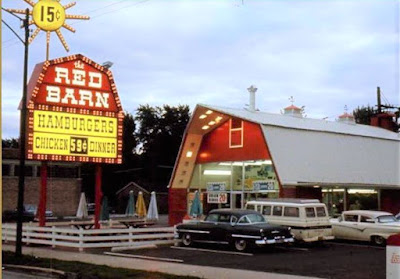Managing Editor
Growing up I always looked forward to wearing a costume for Halloween, but to be honest, I’d rather have the bag full of candy than spend hours debating about what to wear when going trick or treating.
Our family lived in a large tract subdivision with many houses
and streets available for visiting on Halloween. These were the early 1960s,
prior to the arrival of fun-size and mini-Halloween candy, so virtually every
treat handed out in my neighborhood was of generous proportion, except for the
occasional apple tossed in my bag.
This was also before McDonald’s and Wendy’s first opened for
business, so I never received a gift certificate for hamburgers or fries in my
Halloween bag either when the evening’s haul was examined closer.
One year my mother went to Woolworth’s and bought my brother Doug
and I some Casper the Friendly Ghost costumes, but by the time the next year
had rolled around, those outfits were too small for us, so she made us costumes
instead. That consisted of her buying terrycloth bathrobes and coloring them
purple with RIT dye in the washing machine.
Once the bathrobes were a shade of bright purple, she put
Elmer’s Glue on the collar and shoulders and then sprinkled gold glitter over
the glue. She added a gold sash and fashioned a king’s crown out of one of my
father’s shoeboxes. Like the robe, she gave the crown sparkle by using glue and
gold glitter.
That year we went trick or treating as kings. It just so
happened that a few months later I was able to recycle my costume for my role
as one of the Three Wise Men in the Our Lady of Lourdes School’s annual
Christmas Pageant.
I can recall another year when I was about 10 when my brother went trick or treating as a hobo wearing a long old black coat, a bandana and his face covered with charcoal to appear dirty. That same year I was a cowboy with a brown vest, brown chaps, and a brown cowboy hat. To complete the look, my father painted a mustache on me using brown paint from my Paint-By-Numbers watercolors set. Looking back, it was an outrageous outfit and reminds me now of the “Cowboy” representative of the Village People band of the 1970s.
For some reason my mother seemed to always suggest dressing me
in a clown costume for Halloween, an abhorrent idea that I always instantly
rejected. To this day I loathe clowns and have little respect for anyone named
Winky, Bobo, Bubbles or Jingles.
Many of the boxed Halloween costumes of those days were made
of rayon, which made them extremely itchy and hard to wear after several hours.
I remember one boxed costume set I talked my father into
buying for me was a skeleton outfit and another year he agreed to buy me a “Hot
Stuff the Little Devil” costume at McCurdy’s Department Store. The little devil
attire came complete with devil’s mask and a plastic pitchfork too.
Through the years I went trick or treating as a wizard, a
policeman, an astronaut, a magician, a pirate and one year as the cartoon
character Underdog.
As I got into my teens, the last time I went trick or treating
I wore a King Kong rubber mask I had purchased with my own money I had earned
from delivering newspapers on my after-school paper route.
Years passed before I attempted to wear a Halloween costume as
an adult. Sometime in the 1980s I remember attending a party with my wife and
we went as a gangster and the gangster’s girlfriend, with my wife wearing a
men’s grey suit, a fedora, and an orange necktie, while I wore a bright yellow
dress and a Carol Channing-style blonde wig.
Years later the newspaper I was working for in Florida had an
annual Halloween costume contest for employees and for three years in a row, I
won that event with an assortment of humorous outfits. One year I was dressed
as an old woman with a paisley dress, a gray wig, a hairnet and a walker and I
followed that the next year with a Michael Jackson costume that featured a dyed
chef’s jacket, black wig, and sunglasses. I donned a Flavor Flav outfit with a
horned helmet, a zany lavender blazer and large clock hanging from my neck for the
year after that.
The last Halloween costume contest I entered there, I went as
a pregnant bride and wore a size 20 wedding dress I had ordered from eBay and a
long blonde wig. Unfortunately, that costume didn’t win, but the looks I
received from the newspaper circulation manager while changing into it in the
restroom before the contest were priceless to say the least.
I won’t be wearing a costume this year to answer the door for
a new generation of trick or treaters, but at least one tradition will endure
at our house. In a throwback to my youth, we have three boxes of full-size
candy bars to pass out to kids while admiring their imaginative costumes. <













